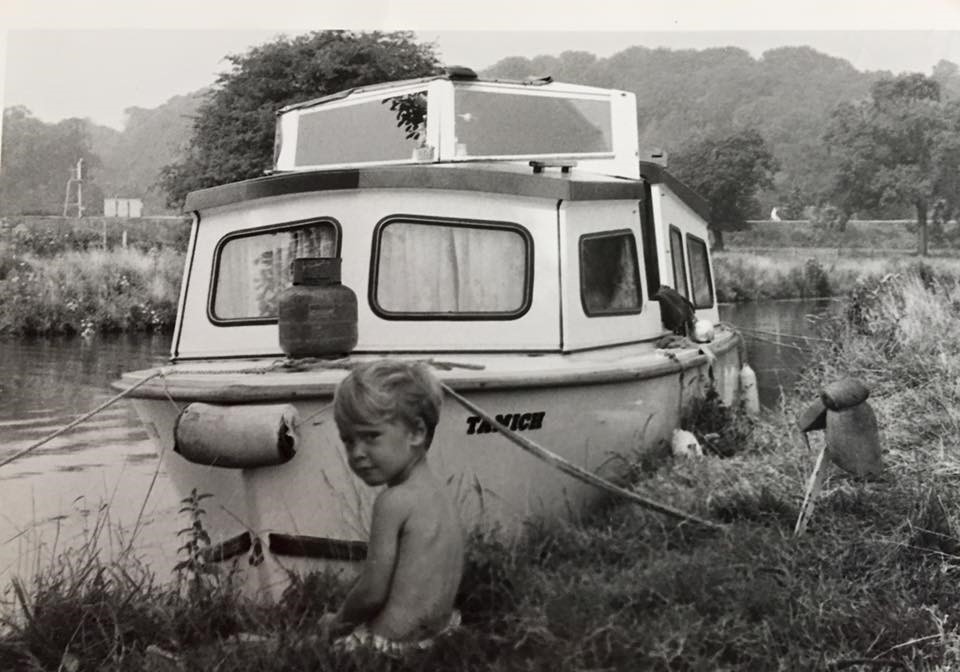Just 3 days after I was born on the 29th January 1971 while my Mother still in hospital coming to terms with what God had bestowed upon her (Yep me!) My Father walks into the ward and states “I bought a boat!” With my Sister not yet 4 years old I wish my memory could take me back to see my Mothers face!
My Father was a roving salesman, spending the whole week away from home, he wanted something to bring the expanded family together somewhere he could escape from his clients. One client visit led him to a Boat club in the small town of Byfleet Surrey England on the River Wey, a contributory to the River Thames. Byfleet Boat Club became my childhood second home.
Our first Boat was a small Day boat, it had a little cabin for shelter, and about 13’ long made by Mayland. I recall my Mum telling me “Your Father took me proudly down to the boat club where he had just got this boat delivered and I took one look at it and told him if we are going boating it will not be in that!”. So back to the dealers where they upgraded us to an 18’ long cruiser. This was a popular boat model by the manufacturer Shetland. She was named Anchael the name coming from the first part of my Sisters name Anita and the second of mine Michael.
1973 rolls round and the family is growing my Dad being practical found a kit boat manufacturer, sold Anchael and spent the winter of 73/74 building Tamich (The name of course coming from the reverse format of Anchael!)
Me aged 3 moored South Of Guildford Surrey in a place that became our summer home!

Of course I have little memory of boating until about the age of 4 when my parents took the large leap and acquired Rheinmaiden (this was pre named) Rheinmaiden became the long standing family boat for just over 10 years. She was a 23’ Norman Conquest, 6’10 wide and powered by a 20Hp Volvo outboard, quite cutting edge for back yonder!
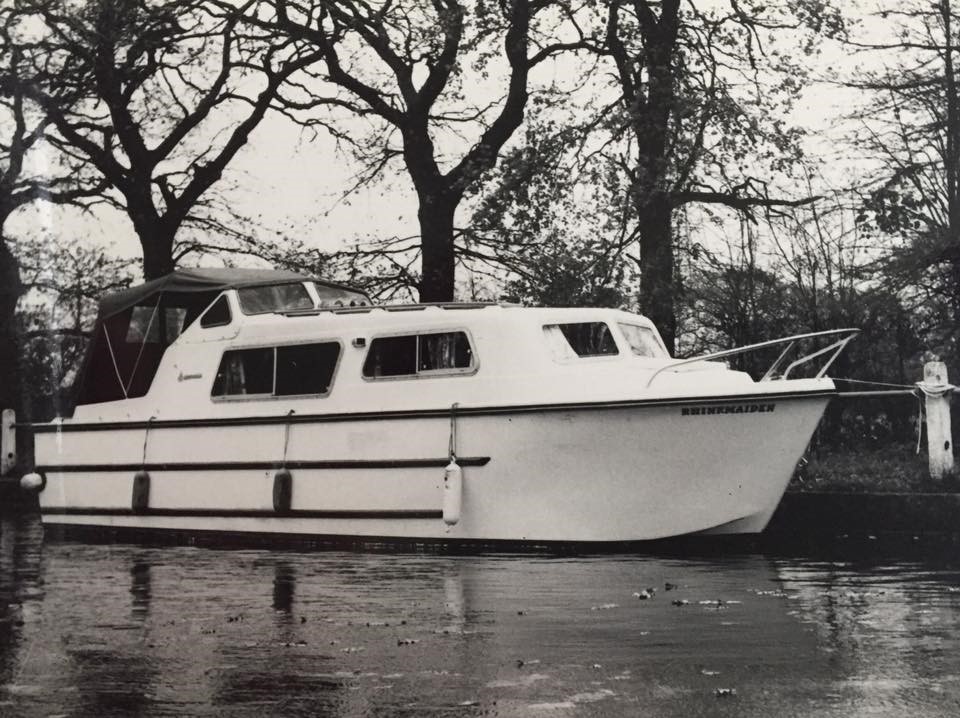
So I guess this is where the story really starts. By now I have a memory of my early years, the differences in boating in the UK and Canada will become apparent through the stories that unfold.
Our first real family Voyage was the Summer of 76 me now being 5. We took Rhenmaiden from the River Wey onto the Thames, headed West towards Oxford and up the Oxford Canal. Before I continue I will explain the differences in rivers in the UK and from what so far I have experienced in Canada.
British Canals (canal man made, river natural) are in the main no more than 40’ wide and rivers, well it varies, but the depth does not differ much unless we are into the Tidal parts. Expect depths of around 4’ on average, silty bottoms little on the way of rocks to worry about and a top speed of 4mpH! Boats are not made to go up on plane.
Locks! Unless on the lower reaches of the Thames you are on your own! Hand wind self sufficient, if you got stuck at a lock in the middle of no where in 1976 it was a long way to run for help. Accidents did happen sadly but rarely and normally associated with hire boats.
Locks were designed for 1800’s commercial travel on Barges the locks were on average 72’ long and 14’ wide and as little as 7’ wide this was to cater for the commercial barges of 70’x 6’10” The barges originally were horse drawn and the family lived in the back. The horses walked along a purpose built “TowPath” Today many of the evidence of this remains along the Towpaths.
Traditional English Barge
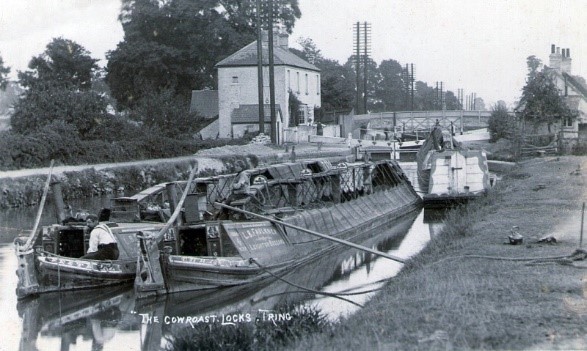
ME aged 4 pushing a lock gate on the Oxford Canal
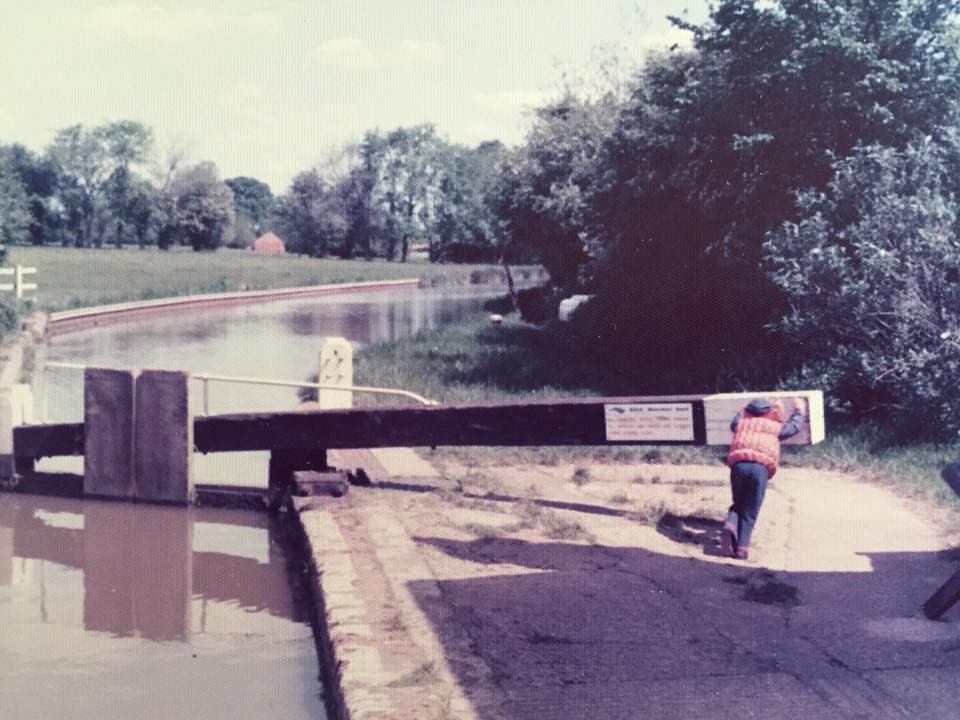
Rheimaiden squeezing through a swing bridge on the Oxford Canal
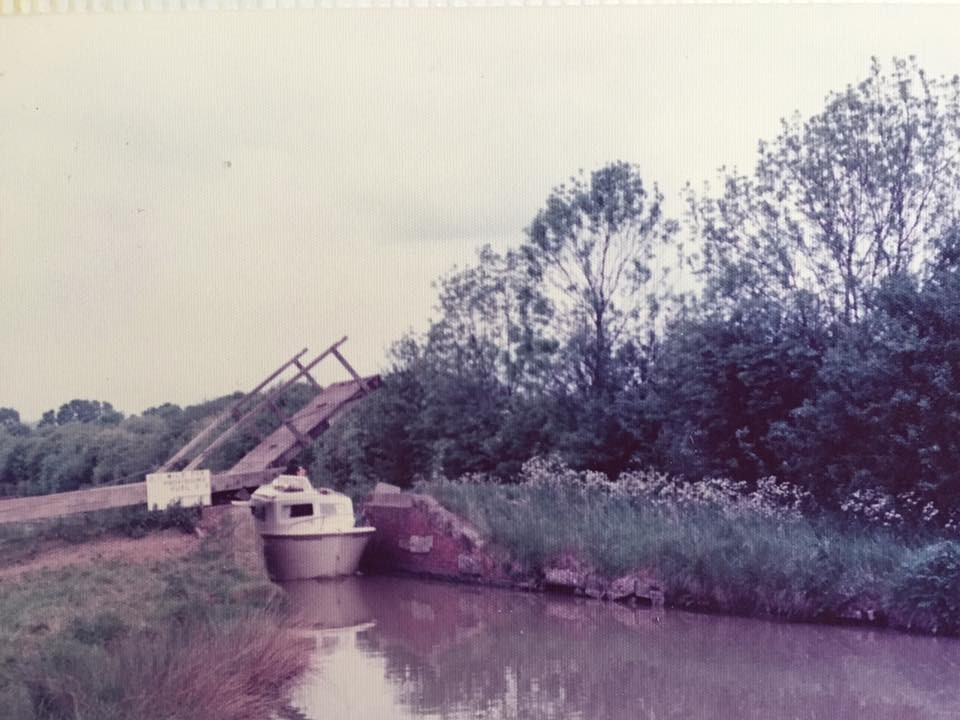
DeepCut lock
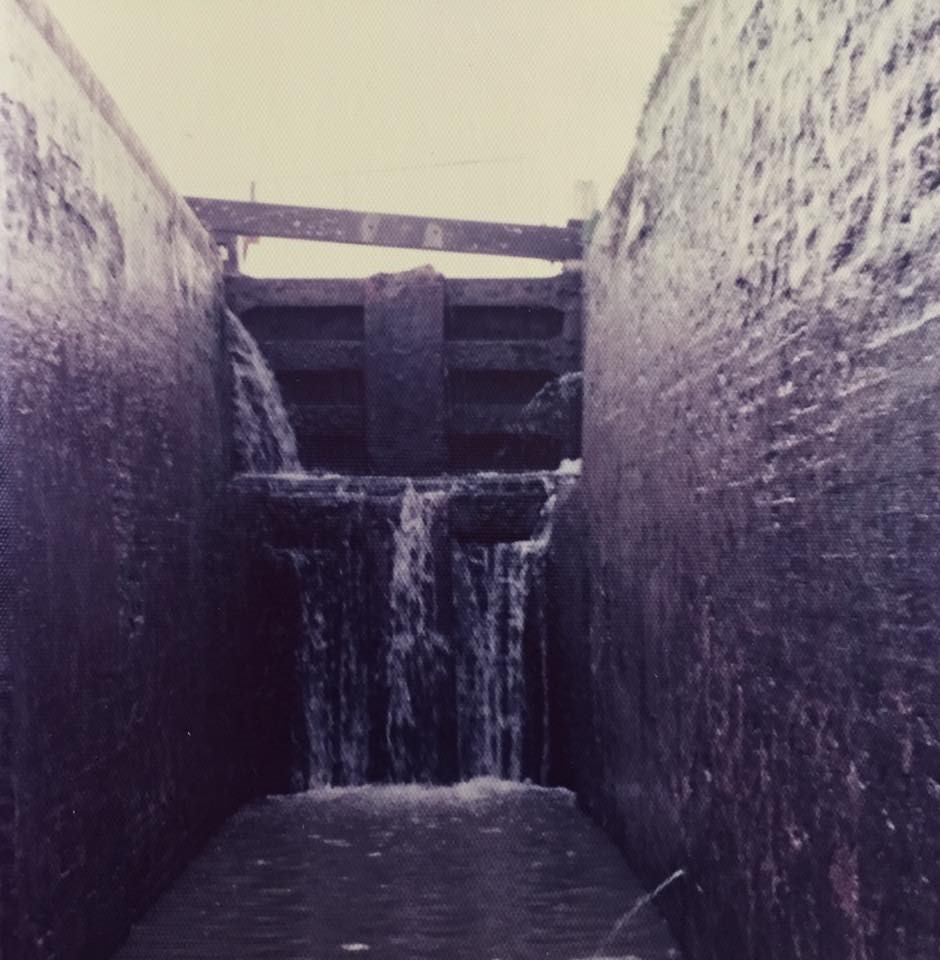
I digress, where was I? Oh yes, my boating memories now started!
My life soon became wrapped around nearly every weekend Summer and Winter at Byfleet Boat Club, there was a big family feeling everyone looked after everyone else’s child and weekend gatherings were regular about 10 miles up river on a little back water near an old Monks Priory known as Newark. The name Newark will come back as the story unfolds.
Newark Abbey and the back water of my childhood
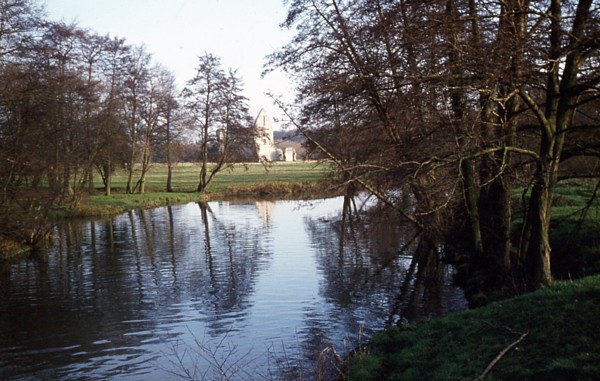
Years upon years of memories were made at what became known as the “moorings” a strip of field nestled beside deep woods where we would tie up to the bank using boat stakes. This is another big difference from Canadian boating I have experienced to UK boating, mooring up against farmers fields, middle of no where. The Canadian version I see as anchoring up in a bay.
English waterways on the whole run through deep countryside. The canals and rivers run through farmers fields. Farmers had no objection to overnight mooring provided you did not make a nuisance of yourself, I became at one with cows and did end up in the river after being chased by a Bull!!. Purpose built docks are rare, anchoring unnecessary. Some towns would have “wharfs” but it was never advised to spend the night there, even back then England was not without its troubles.
Back to the memories of the Moorings! We all would meet up at the bank side either Friday evening or Saturday morning there was always someone there, Adults would take turns to bring the lawn mower to cut a strip through the undergrowth and we created a fire area. Then the fun began. We would take out motorized tenders (fibre glass dinghies) into the back streams and into the woods and collect fallen dead wood, some of the boaters brought chainsaws for the larger lumps. The Dinghies would come back full with us sitting on top of the wood piles with about an inch of hull to spare and yes the odd time we sank!
Evening came, massive fire built and the inferno started! Picture 15-20 strong group nestled around a huge fire about 8’ in diameter! It was not long before there was an invisible no go zone between human flesh and fire. But this created a game of “Best inventive sausage cooker” Many contraptions were crafted from natural offerings and sometimes cheated fishing rod rests. Sausage cooking commenced, I have no idea how many partially cooked blackened sausages I ate but I never recall anyone getting sick!
My First Boat!
Fast forward a couple of years now aged 7 a seasoned boater, my father purchased a 12’ long dinghy and strapped a 2hp engine to the back of it! My boating became independent and real! Boy did I attract many school friends for the weekend!
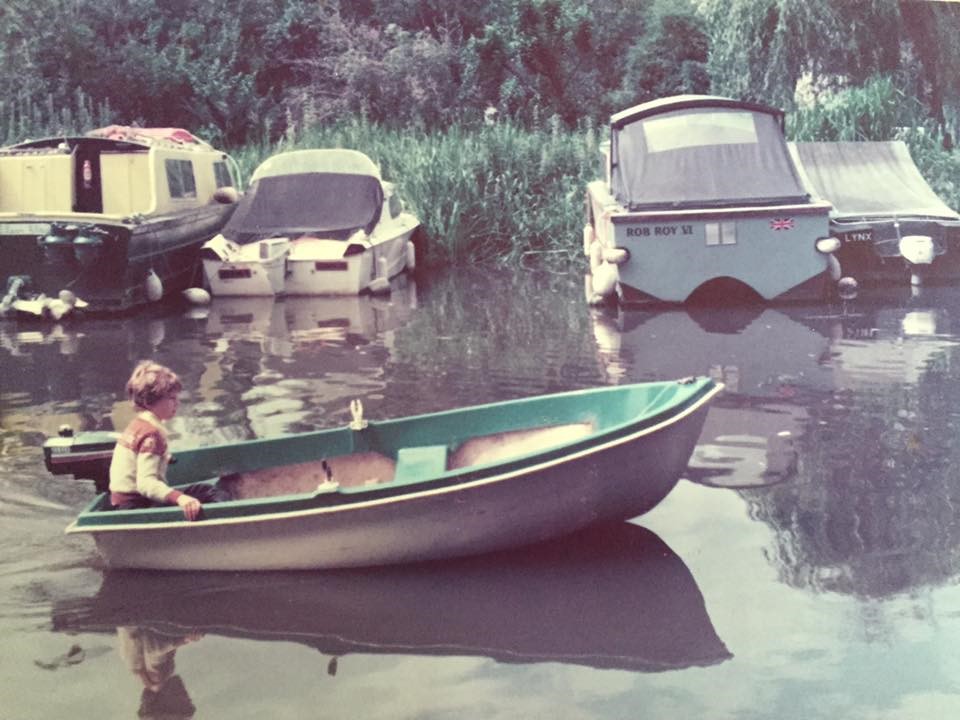
To move the story forward to my next boat at the age of 9, I need to explain the path to how commercial Barges became converted in the 60’s to become the most popluar form of boating in the UK, “Narrow Boats”.
A Barge as explained before was a long “Narrow-Boat” it consisted of an open or tarp covered long storage area for goods and a small living quarters at the back, behind this was the rudder. As propulsion changed from horse to an engine, where the cabin used to be an engine room was made and in front another cabin was made for the travelling family, although sometimes a smaller tender was used of the same design, so there was a power house and the barge behind.
Commercial Barge with living quarters at the front (note the equal look to a modern pleasure narrowboat)
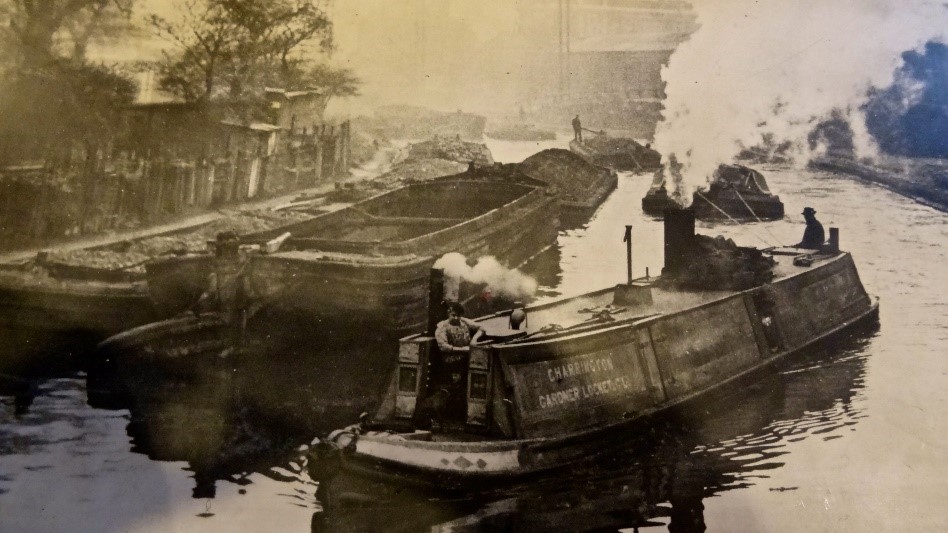
In the late 60’s these barges as they fell out of favour with commercial venture had wooden structures put over the front open gunnel and turned into long narrow cabins, they were fitted out and became what is known today as “Narrow Boats”
Cruiser style Narrow boat (these come in lengths from 26’ to 70’)
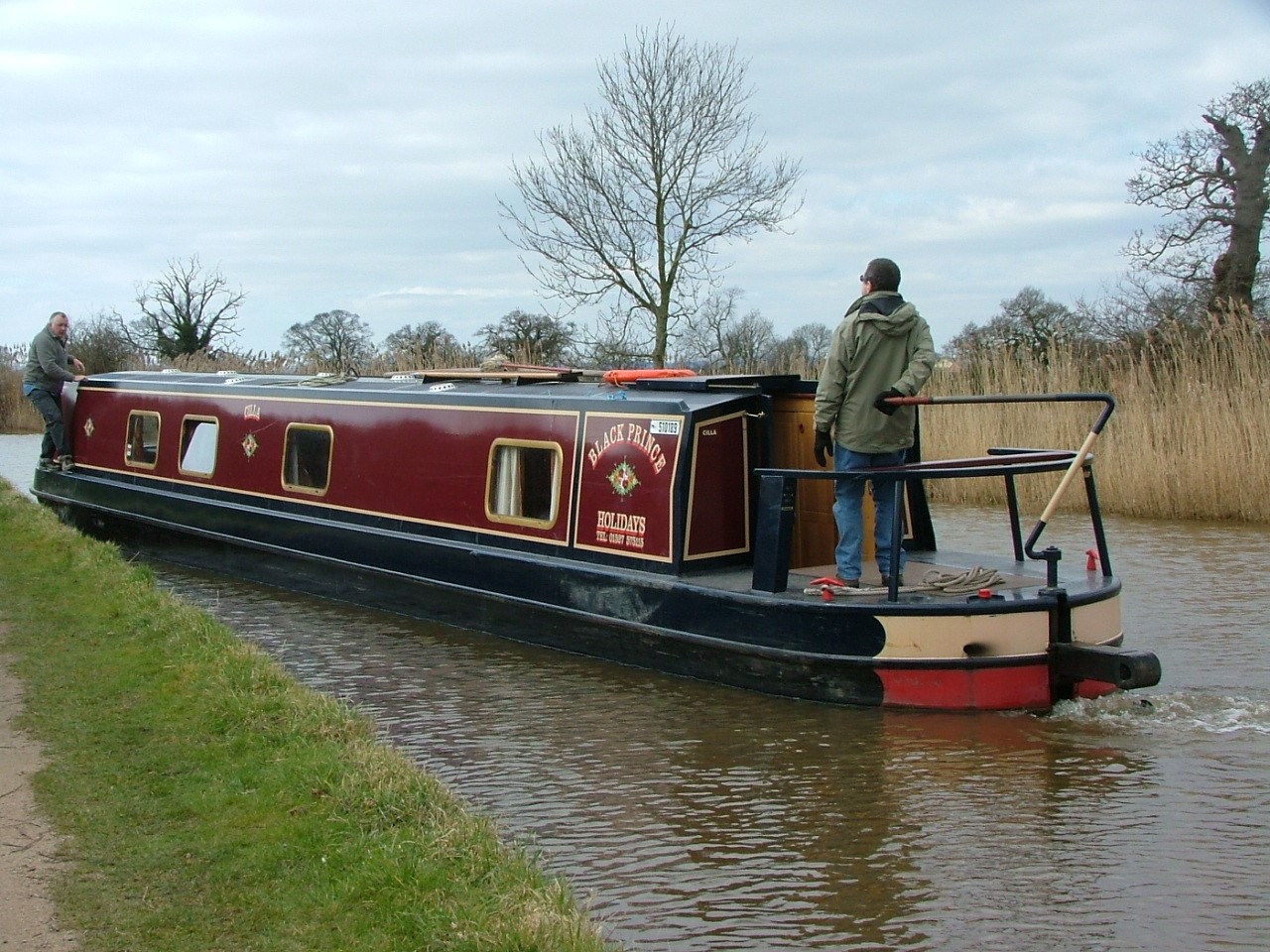
It is a passion in the UK to build a Narrow Boat that mimics many of the traditional fittings and designs of the old Barges, these are aptly named “Traditional Narrow boats”. They often have port holes for windows, there is an engine room instead as with standard narrow boats where the back deck is more open and the engine is under the floor.
Example of Traditional style narrow boat
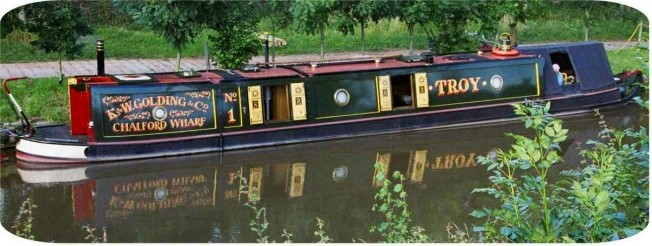
Narrowboats in traditional colours are red green and yellow striped, either green sides with red roofs of visa versa. Modern boats are either painted according to this or on a theme similar. There is quite a traditional art form for narrow boat painting of roses and swirls and castles etc on them.

So back to my Story! My second boat and how the above Narrow boat explanation fits in.
By the time I was 9 another member of our boat club was selling a boat he had made by fitting a cabin to a large Dinghy, the boats name was “Under Wey” (we were on the River Wey!) when his kids had outgrown it my Dad did some Barter for it, I can’t remember whether it was a cow for a pig or goat for a horse but whichever way I had my very first Mock cabin cruiser at 9 years old!!!
My Dad saw the shape and the growing popularity of Narrow Boats and took it upon himself to paint Under Wey in traditional design and colour. What already was a cute unique boat and with a 9 year old at the helm which already attracted attention, when entering locks located near pubs turned the boat and me into a minor celebrity on the waterways!
Under Wey and me with unknown friend aged 9!
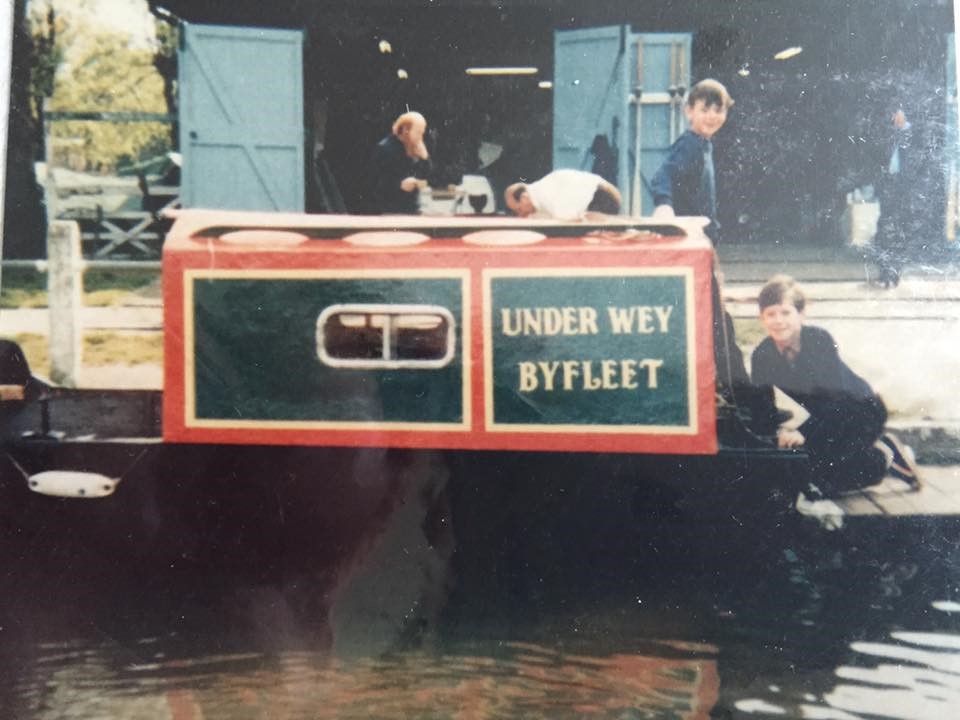
With me in tow we travelled up and down the River Wey most weekends and it was not long after probably around the age of 10! (Yikes) I was let loose and allowed to travel with a friend to spend nights up river! Of course making sure in advance we would not be alone and another club member was always behind a tree somewhere keeping an eye. There were also lock keeper cottages, although the keepers did not man the locks they did control the weirs, and I was by now well known by them all.
At the ripe old age of 14! My Dad heard about a fellow Club member (Vicar by trade) that had moved himself and his boat up to Norfolk. He wanted to sell the boat and it was in pretty bad shape, so my Dad offered him 200 pounds for it with no engine on the back. Another horse trade then followed.
Another club member wanted Under Wey for his kids, the boat had no real value and Dad wanting to keep it in the club made the suggestion that if the prospective new owner wanted it, as he owned a haulage company he would go and get the new boat and bring it down in exchange for Under Wey with no outboard! The deal was struck, I travelled up with Graham to Norwich to collect my first real cabin cruiser! Aged 14 owning a 16’ long 2 berth boat with tiny galley and a toilet! I was made! Friends a plenty, girls, rolex’s…. Well OK the later simple dreams of a pubescent 14 year old! My Dad and I spent the spring renovating, some items donated by our very family close knit Boat club.
Club members all helped each other out in different ways, the club was a complete melting pot of skills and social backgrounds. At the weekend the stock brokers and well heeled socializing round the camp fire with families from South London slums that scraped money together to own a small boat so they had somewhere to get away from their troubles in the City, and of course people like my family middle of the road. Everyone just jelled. On a Sunday evening, the town folk would pack up and at least try and find the cats they brought with them and start the long walk to the railway station, while the well heeled would slip quietly away in varying degrees of posh cars. And my Dad! Hoping the rusty old Ford Cortina would start or at worst not have been stolen by the local lads!
The club today and not changed in look for 40 years or more
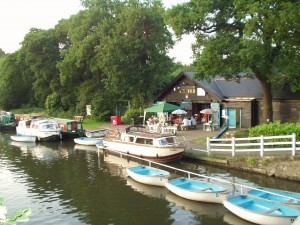

My First real cruiser named Lizzy Drippin (note the rusty hulk in the background)
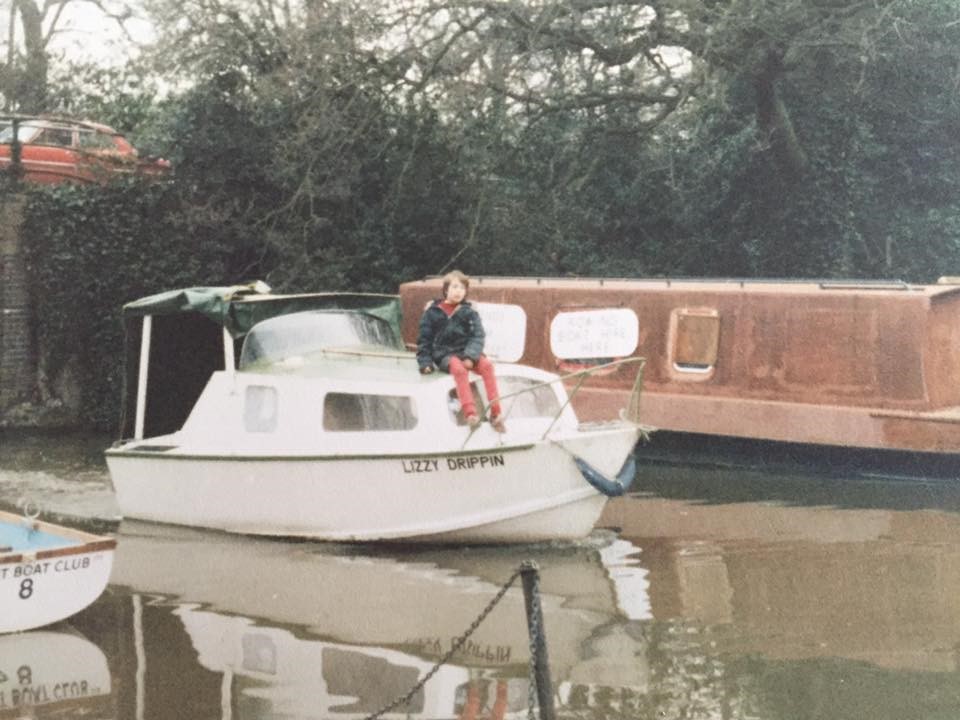
I had Lizzy Drippin for 8 years after which my UK boating life came to an end but I shall get to that later, but in those years I have a book full of memories and stories to tell, much of which carved, I feel, my free spirit character today, my parents let me completely loose, building trust over the years I was a free agent and the river became my solace through some troubled times.
In the background in the upper photo you can see a rusty shell! That my dear readers was the Narrow boat my parents had built from plan by a steel fabricator in North London in a steel shed on a pig breeding farm!
In 1984 Dad took the leap and sold Rheinmaiden our family boat and with limited income set about finding plans and a fabricator. Dad could not afford to go to the main stream Narrowboat builders so he did everything from scratch.
Narrowboats can be purchased in any form and length, from bespoke fully kitted to an empty shell. Dad went for the empty shell approach and commissioned the fabricator to build a 36’ cruiser style narrowboat.
We spent every weekend of the winter of 84-85 travelling up to Nazing in Essex from our home in Epsom Surrey to see the shell take shape. The fabricator had a bit of a problem with not doing anything or doing it wrong, so mop haired me took it upon myself to start taking Saturday morning measurements of all that had been done or not been done the week before, leaving notes behind as to what was not right and needed to be replaced! I do not think I was popular! (you think?!)
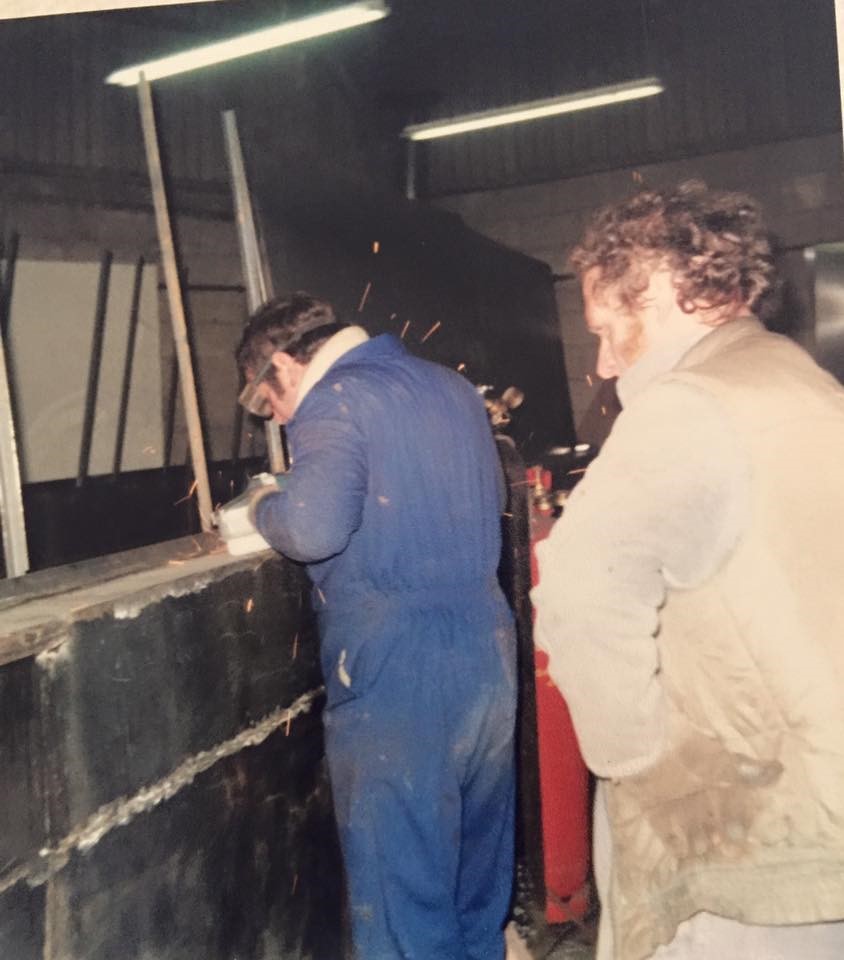
Yes! That me and my mop, insert laughter here ….
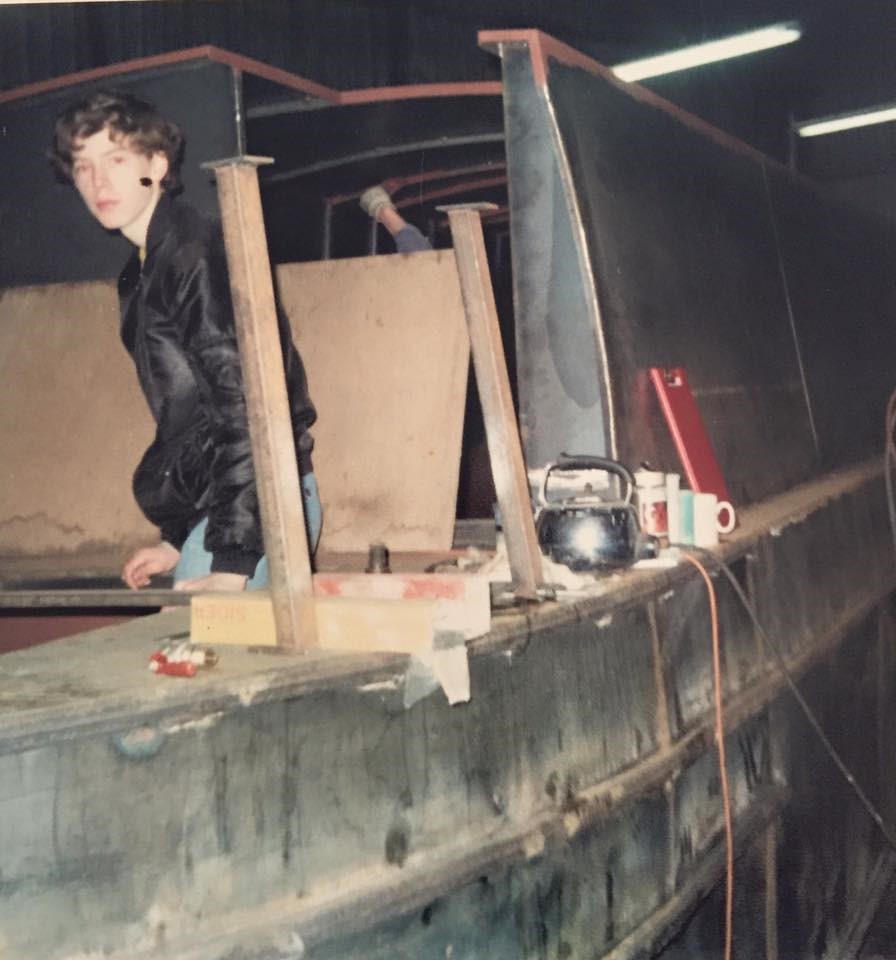
Checking the measurements! Making myself Oh so popular!
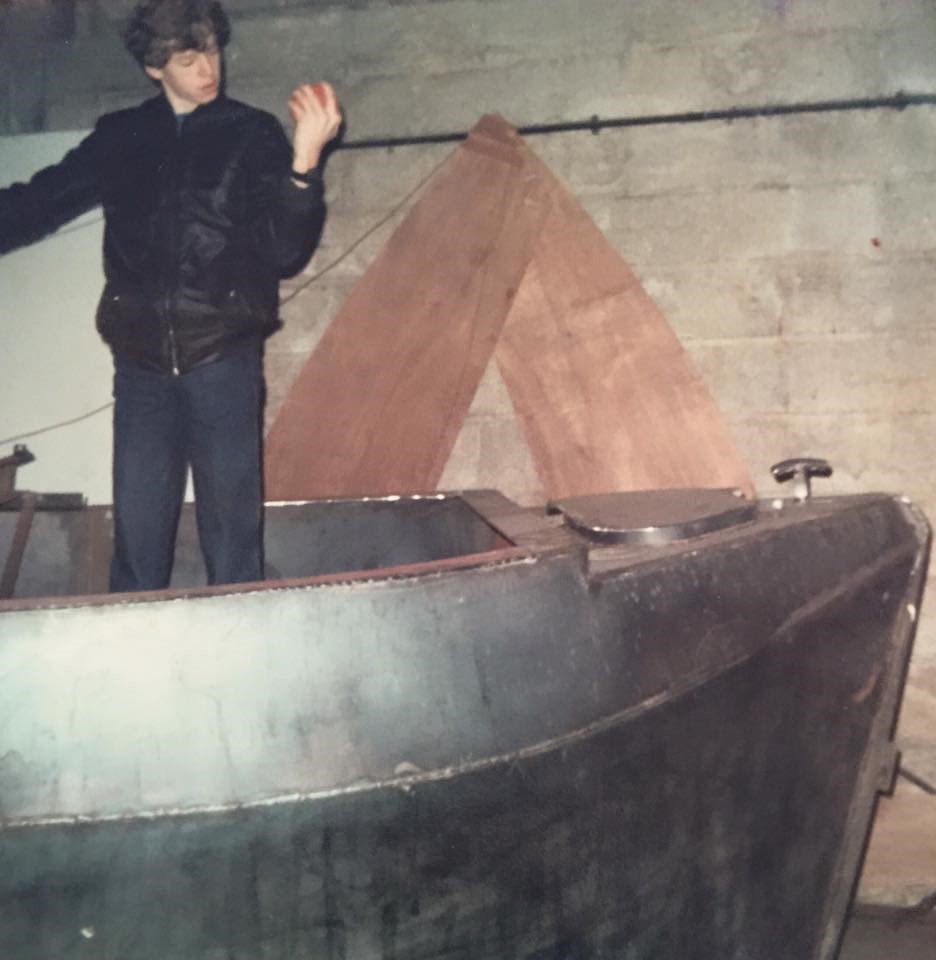
Spring of 1985 the boat was loaded onto a truck and driven round London to Historical Hampton Court palace Docks and offloaded onto the Thames. Where a boat club member towed the steel hulk up the Thames to our boat club on the River Wey! The engine fitted but not running. The engine again another story! Came off a farm near Dover, a 2 cyclinder pre war Petter diesel engine!)
My Dad had spent ages researching engines, narrowboats often were fitted with old Taxi diesel engines or if you had money a new lump, Kabuta often used. But for us it was an underpowered Lump that to begin with we had to start with a crank handle by flicking over the decompression lever, giving it a good handful of 14 year old muscle (my Dad had a heart condition) and once momentum was built flicking the lever back, and if lucky you did not get whacked in the face by the rebound from the compression kicking in and it would start. But the engine had the most beautiful sound and really gave the boat character and never went wrong!
Delivery! Note not all window holes yet cut.
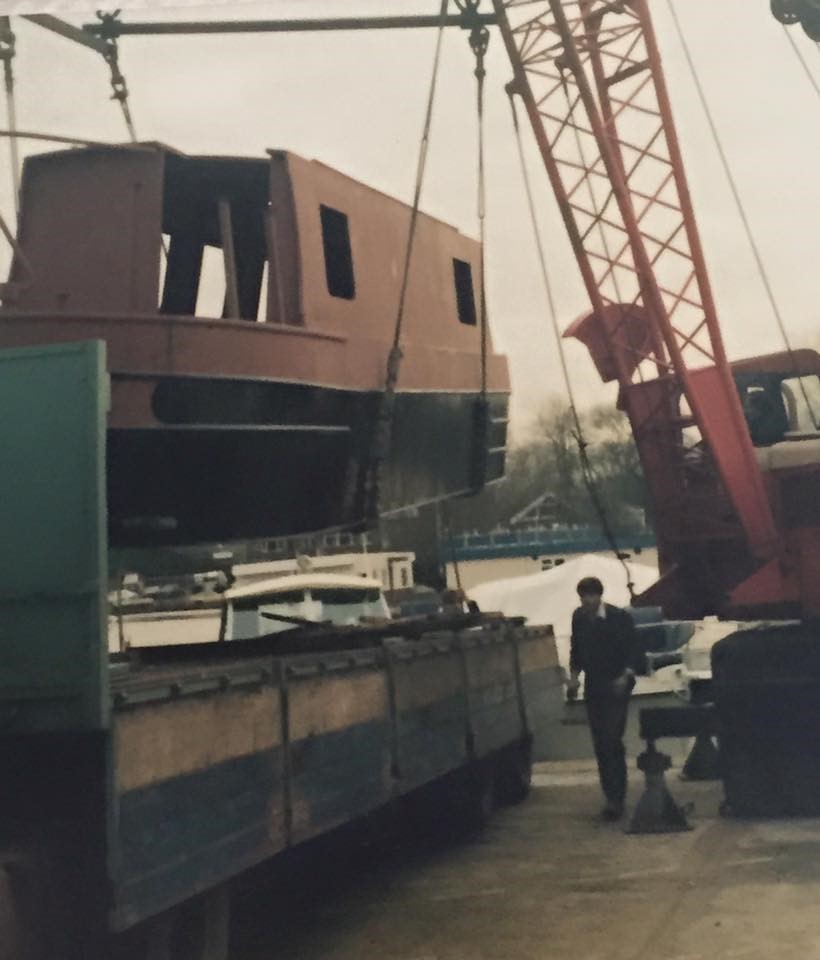
Delivered to our Boat club, and yes insert more laughter here for the hair!
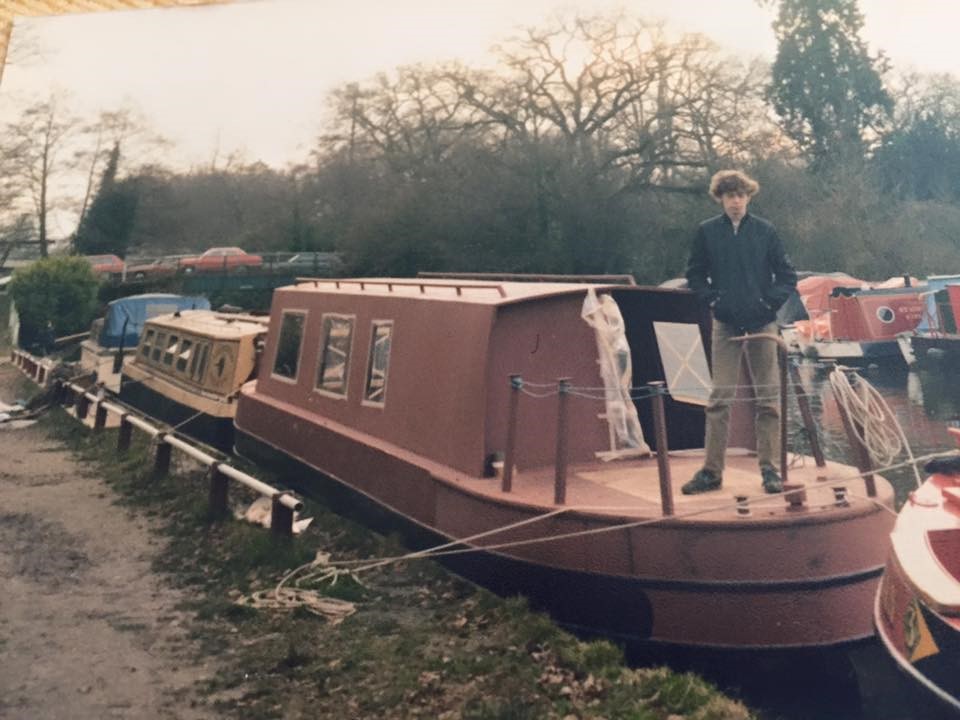
The Bow, plastic sheeting for doors at this point.
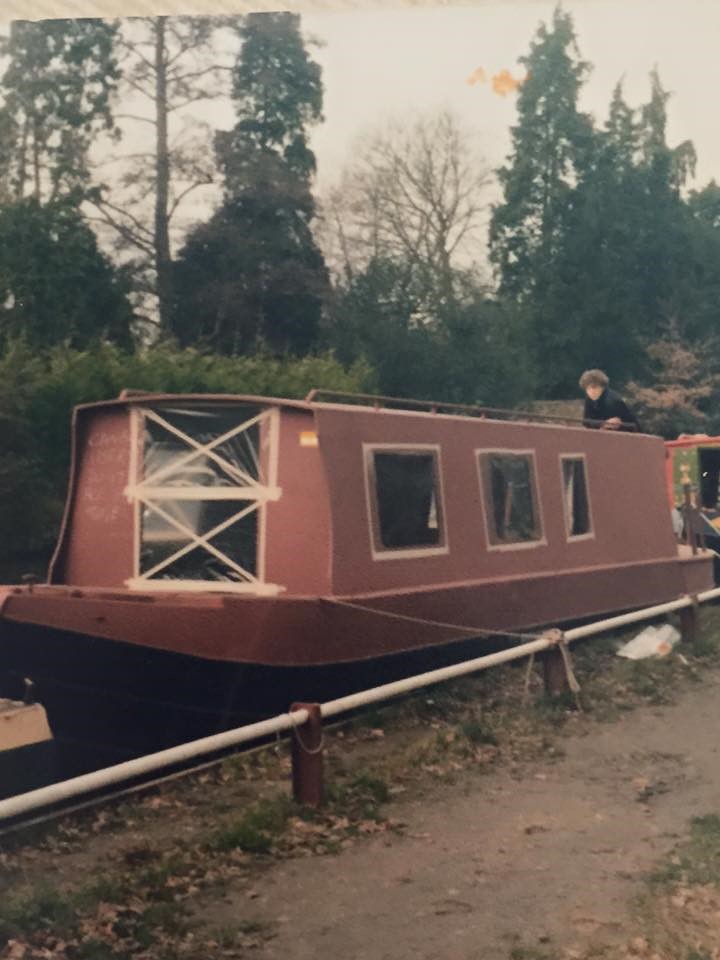
Fitting out began in earnest, every weekend every holiday was spent, every single part to make a boat had to be installed. The first of course was ballast to get the water level right. This is done by filling the bow water tank by 50% and the fuel tank in the rear by 50% then adding broken paving slabs in between the steel joists inside the boat. My Dad hired some of his College students to lay the “crazy paving” in the boat.
After this windows went in once more holes were cut after Dad had worked out where he wanted them, followed by framing, this was done by drilling holes in the welded on angled iron in the boat, fastening wooden batons and then fabricating from there. Tongued and groove pine was chosen for the roof and marine ply for the sides which was then painted.
As for heat! In traditional style a wood burning stove was fitted! Well you cant have a Narrow Boat without a smoke stack!
My Dad then painted in traditional style the exterior and named her Newark Mill!
Now cast your mind back to the beginning when I mentioned Newark the place where we used to moor up for weekends and have camp fires and many raw sausages! Well across from there used to be a Mill, one night it mysteriously burnt down shortly after planning permission for apartments was not granted. So the boat was named Newark Mill in memory of this grand structure.
In the 80’s crazy paved driveways were the rage! We had a crazy paved narrow boat!
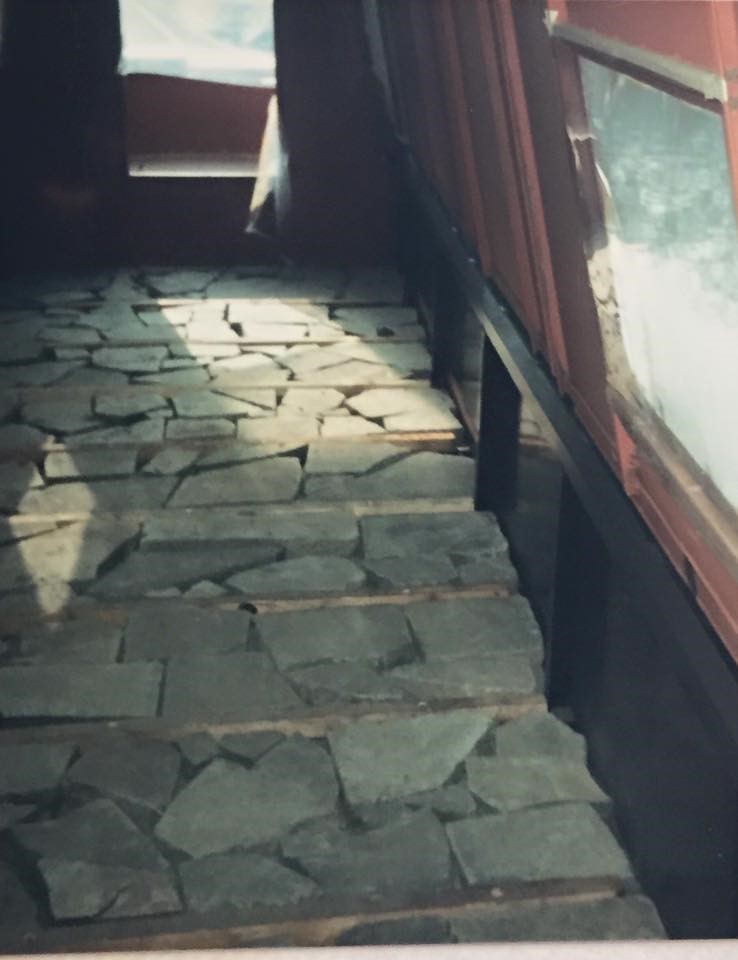
Steady Hand painting!
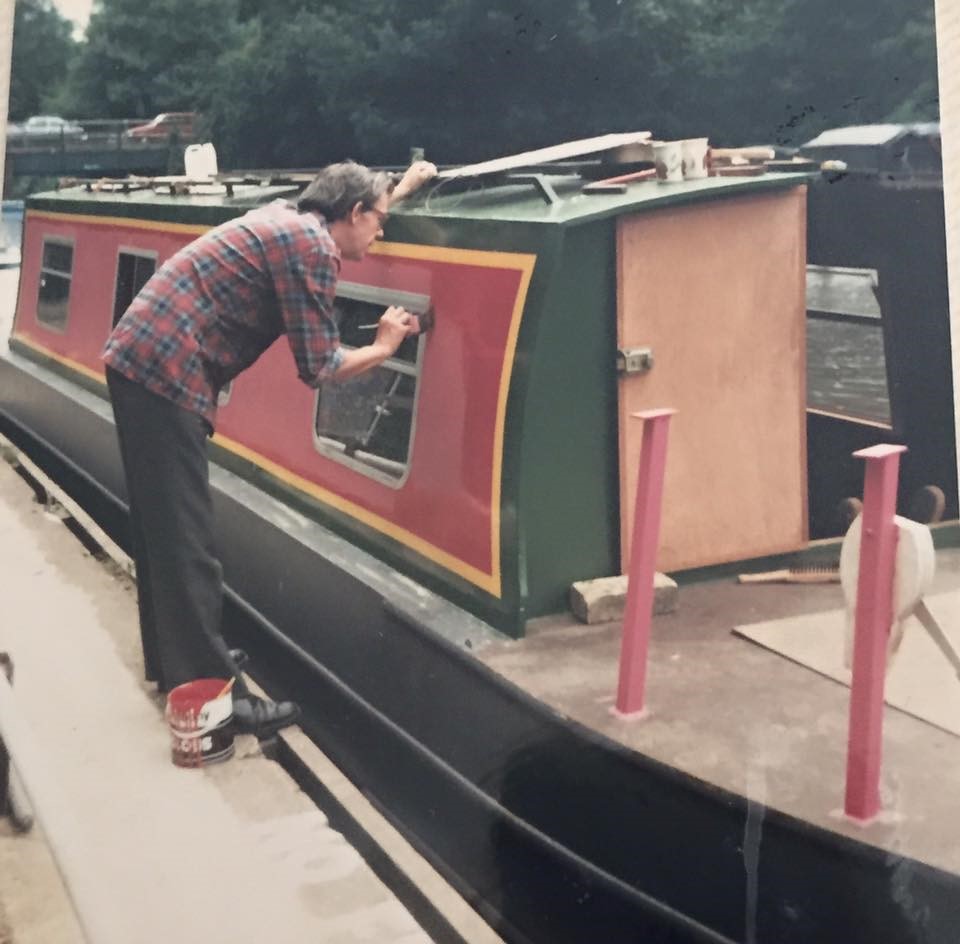
Wood burner
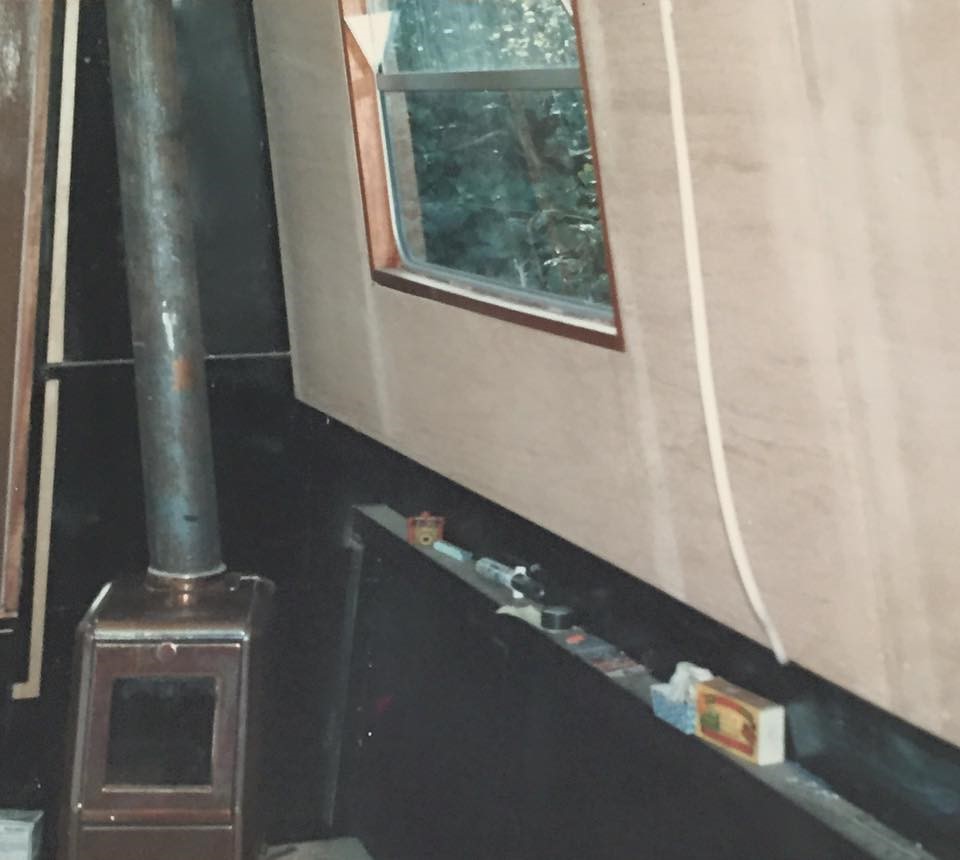
Smokes UP! And the new Pope is…..
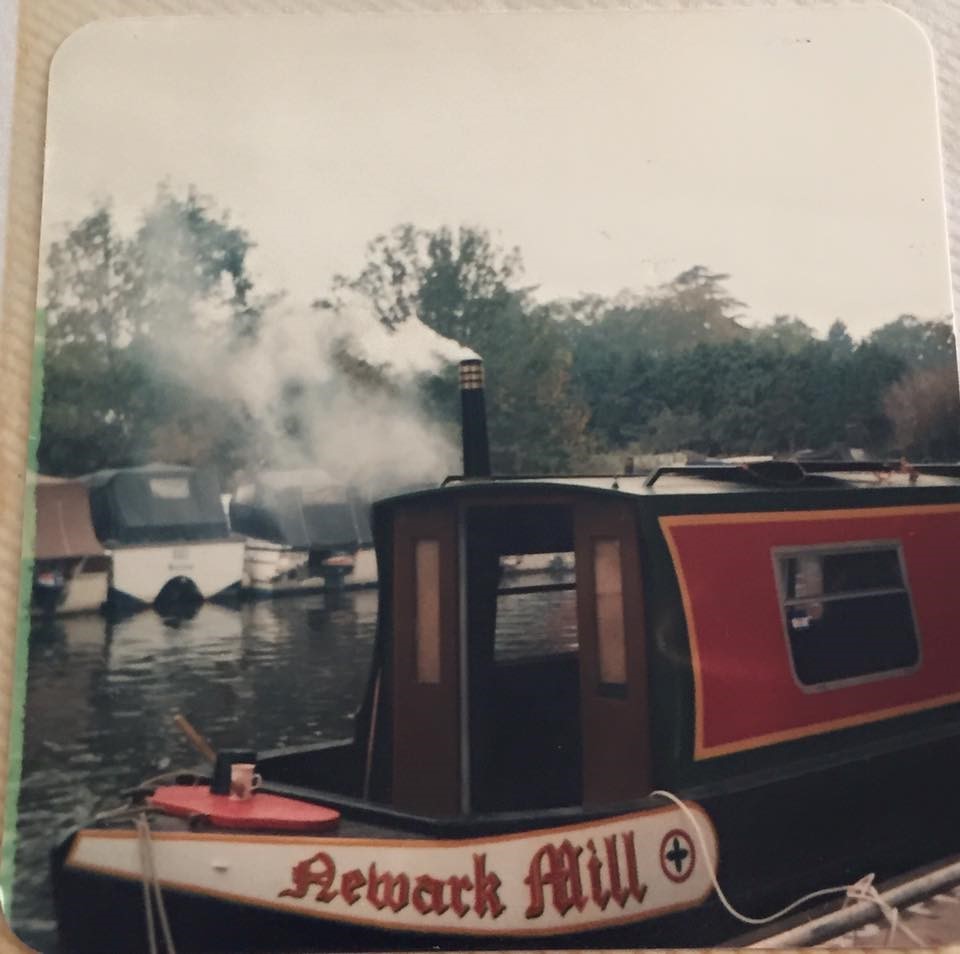
Inside fitting
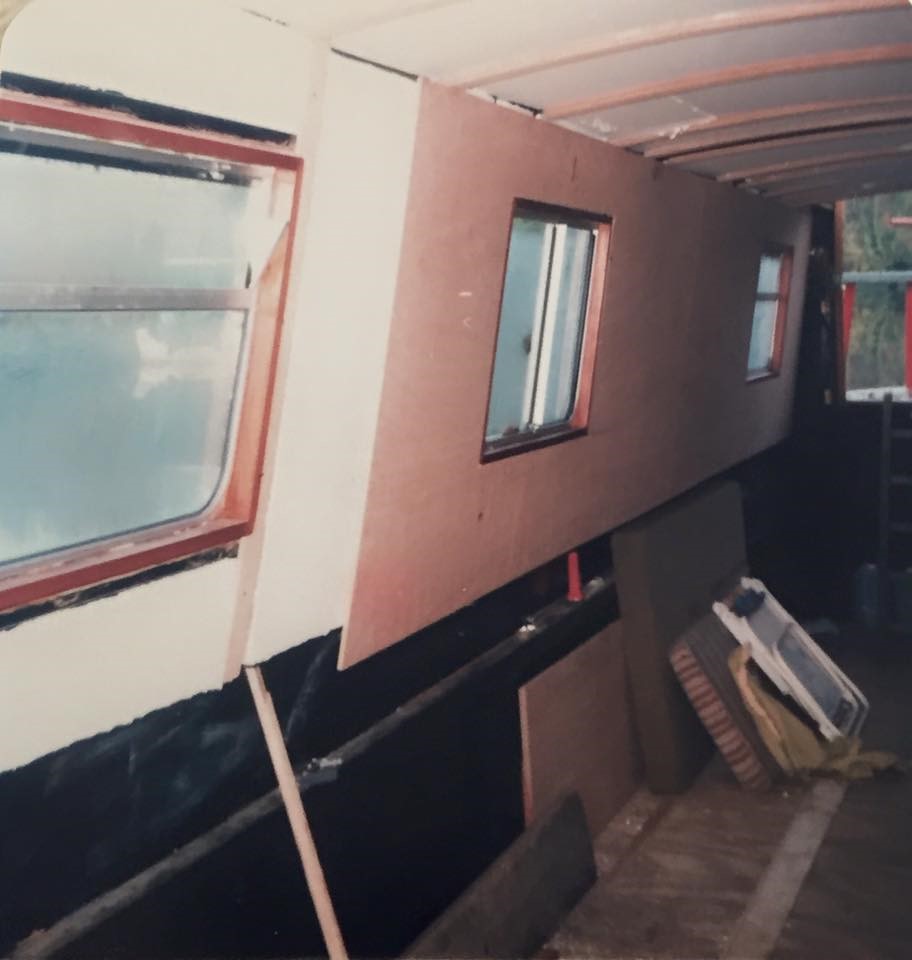
Front “living room”
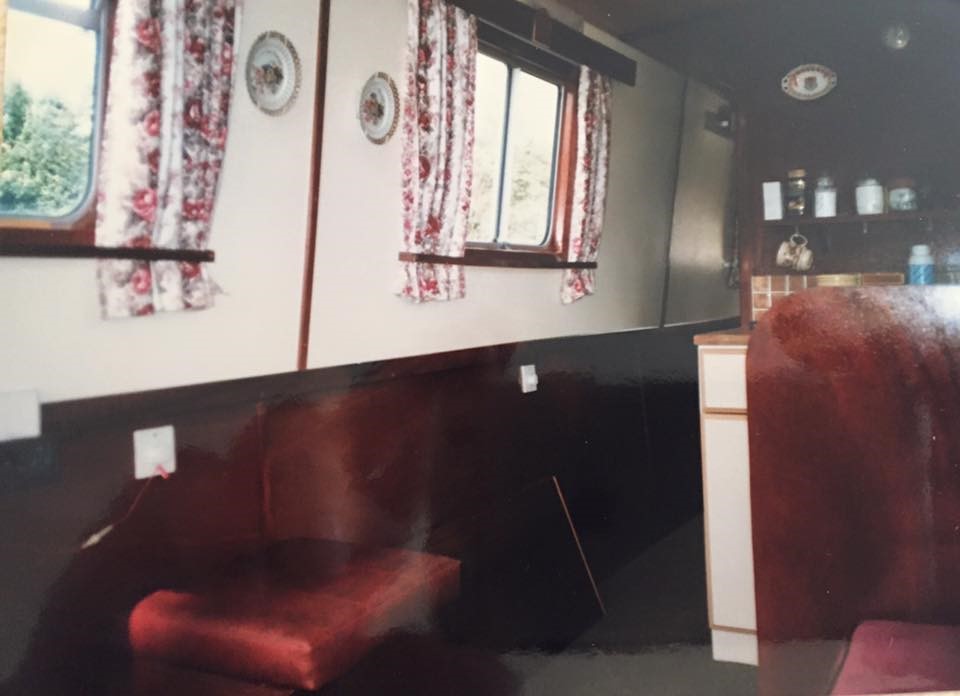
Front “living room”
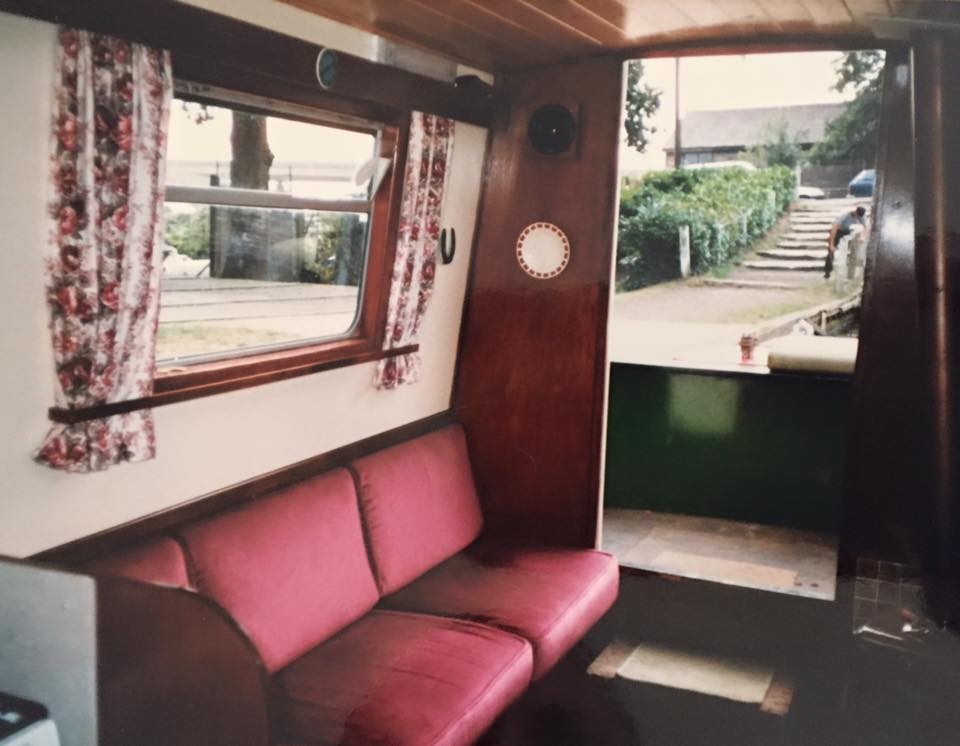
The two family boats together outside Byfleet Boat Club circa 1986
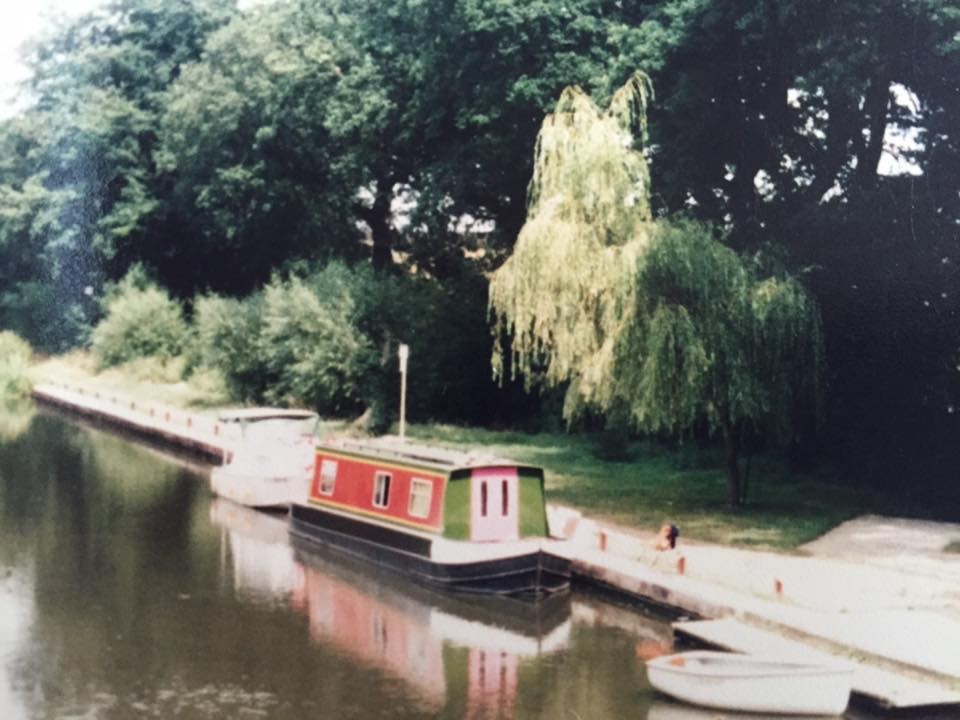
One of the first boat trip with parents and some school friends, I'm not in the photo
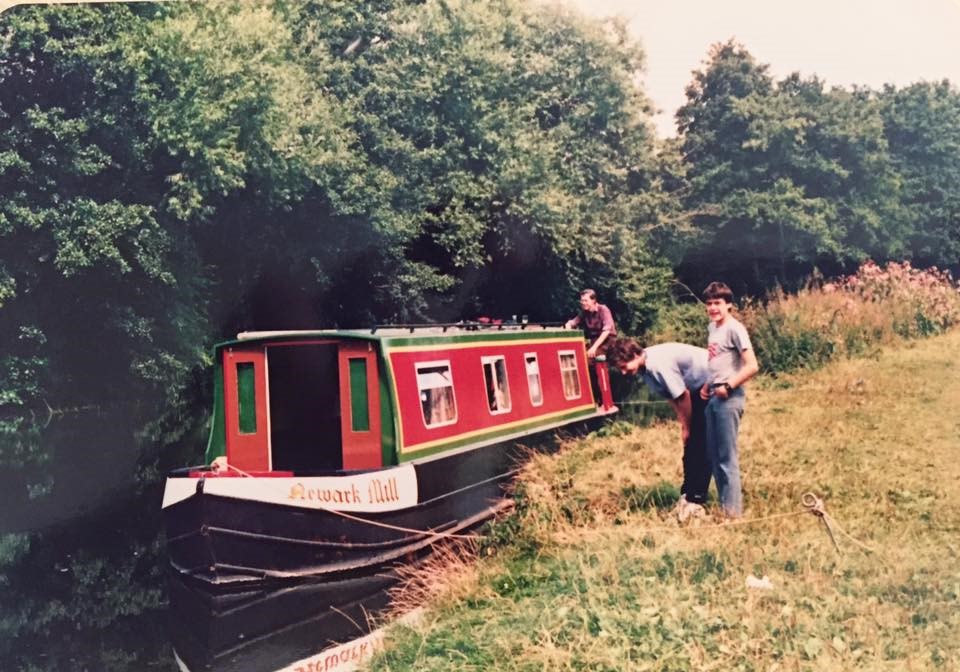
Sadly quite shortly after my parents decided to sell the boat! A tragedy took place at the club which my Mother was directly witness to (I believe this to be the overriding factor) the Boat club also started to take a turn from its traditional roots.
I carried on, building my own memories, now older, getting more adventurous, but Lizzy Drippin was showing her age and I had got into classic car restoration so needed the money for my new hobby. 1992 I stopped boating and it was not until I came to Canada in 2007 did I get back into it!
I now am carving my own families history in Canada on a far different style of boating that has taken some real getting used to. In 2009 with our Daughter Anya a mere 6 months old when we spent our first night on the St Lawrence at Hucks Marina having just purchased a Larson 270. A real baptism of fire that year was! Scared the pants off myself a few times not used to such raw power and a massive water way. So 2010 season we found ourselves at Hurst in Manotick, but alas my wife could not get settled and we sold “spoiled rotten Brat” (no I did not name her) in the late summer of 2010 and invested in a large swimming pool! (well it was still water)
But water flows through my veins and in 2014 when we moved from Orleans to Manotick living directly opposite Hurst Marina. Here I found a Rinker 300 express and the boating dream continued, but this time Liz found the front berth too small for her ample 36” long legs! So this year we purchased a 2005 Rinker 342! We then moved down to Lens Cove on Big Rideau Lake on a recommendation from a good friend Steve Hamre, as living next to your boat really is no a get away.
I have always wanted to name a Boat “Hall Of Dreams” as our family name is Hall. So in the near future we shall go through the re-naming ceremony and our Hall Family dream will be made.
To conclude, I am still adjusting to boating life in Canada having spent so many years pottering about at 4mph on small rivers and being able to dock pretty much anywhere you chose, and now blasting about at 30mph racing to get to a dock with shore power for the evening! But at the same time making great new friends and sharing more than a drink or 3.
We are experiencing our own dreams and life adventures as a family and we hope to have many years ahead exploring the Rideau system and maybe beyond.
Next year I hope my own daughter at the age of 7 will have her very own first boat just as I did! And with that I hope her own passion will be ignited just as mine was all those years ago.
Michael Hall - Boat TBN Hall Of Dreams
Check out Doug Horsfall's blog post on the Scotland Canal System

